Shannon V. OKeets
Posts: 22095
Joined: 5/19/2005
From: Honolulu, Hawaii
Status: offline

|
quote:
ORIGINAL: wodin
What makes WiF so special? Looking at the screenies all I see is another grand strat game..that isn't the prettiest and I think shows how old the design is with regards to it's graphics as I presume the boardgame looks the same..anyway we all know graphics mean nothing (but can be good to the eyes).
So gameplaywise what makes it different to all the other grand strat WW2 games? I we looking at CRT's and die rolls or something more indepth?
Please enlighten me..
Thanks
The first noticeable difference between WIF and other strategic games of WW II is how the navies and oceans/seas are modeled. Land units are corps/army and division size. Each air unit roughly represent 50 airplanes (I am intentionally oversimplifying here). As is often the case, the naval units are individual capital ships, with the destroyers being "implied companions" as part of each ship.
What is so very difficult in modeling WW II globally is the time scale for land, naval, and air operations. The navy is especially difficult to model because of the relative small size of the units floating about in the enormous ocean.
Australian Design Group used a standard hex grid for land operations, with sticky zones of control. There's no big innovation there. Air units operate using the same hex grid and combats within land hexes are fairly typical too for land based war games.
But the oceans are modeled using both a hex grid and "sea areas". Every hex within a sea area is equivalent to every other hex in the sea area. So a German naval unit moving from Kiel into the North Sea travels just as 'far' (in terms of movement points and range) as a British naval unit moving from Plymouth into the North Sea. Once the naval unit is 'in' the North Sea, and assuming it is going to stop therein, it gets to choose which "section box" it wants to occupy. Higher numbered boxes enable it to be more active: more likely to 'see' and/or surprise enemy units, less likely to be surprised, better able to invade adjacent coastal hexes, etc. Lower numbered section boxes have the reverse effects. A unit's range and movement points can limit its ability to move into higher numbered boxes.
The result is that if a unit moves from Gibraltar into the western Med, it only costs 1 MP and 1 range point; while if a unit moves from Plymouth, through the Bay of Biscay and Cape St. Vincent, and then into the Western Med, that takes 3 MP and 3 range. Therefore, you should position your naval units near where you want to have them operate, and in general, you want them to be centrally located for maximum control over as wide an area of the map as possible. The idiosyncrasies of individual naval units (their movement, range, and combat factors) influence which units get placed where. For example, units with a lot of movement points can strike farther afield, but units without much range have to be close to their home port to have any effect at all.
So, the use of sea areas for movement (instead of hexes) vastly simplifies moving your navies about on the map. There is no need to count out dozens, or even hundreds of hexes to reach a destination. Yeah, it is a big simplification, but the payoff in terms of playability is huge.
---
The second major difference between WIF and other strategic war games is the use of impulses within turns. WIF has 2-month turns, 6 per year. Yet within each turn there are multiple impulses, anywhere from as few as 3 to 15+. How many impulses are in a turn depends on the time of year (more during the summer), the weather, and a die roll at the end of each impulse. During an impulse only one side gets to proactively move their units - they are known as the 'phasing' side. The non-phasing side gets to move a few units (mostly air units) but only in response to what the phasing side does. This is not your typical I-Go-You-Go sequence of play. During a turn air units and naval units can only move once (there are a few exceptions), while land units can potentially move every impulse.
---
The third major difference is that air power has a wide range of uses in WIF: tactical bombing of enemy land units to disorganize them before an attack or in direct support of a land attack, naval operations to patrol a sea area or to engage in naval air attacks on enemy naval units, and strategic bombing of factories and oil resources. Then there are the fighters which can fly against or in support of the various bombers. Since air units only fly once per turn, players have enormous flexibility in how they are used. Many bombers have a capability in all 3 types of attacks (tactical, strategic, and naval) though they all have one area in which they are especially capable. How, where, and when to use your air units during a turn are always very tough decisions, even for the most experienced players.
---
And lastly I'll add that the use of Action choices for each major power on the phasing side for each impulse is unique within WIF. Germany can choose a Land action, Italy a Naval action, and Japan a Combined. This lets Germany move all it land units (e.g. to attack France and Low Countries), Italy all its naval units (e.g., for operations in the Med), and Japan a few land and a few naval (e.g., to take reinforcements from Japan to China and follow up with a few land moves and land attacks). Here is another place where the players have tremendous latitude in what to do, each and every time they are the phasing side in an impulse.
---
That's just my take on some of the unique mechanics of the WIF game system. There are a lot more I could mention, but I am suppose to be working on code at the moment. Overall, the players have a ton of hard choices to make, but there are so many decision points that screwing up a few is rarely (I would even say never) disastrous. The same is true for bad die rolls. The better player almost always wins (except when I lose Overall, the players have a ton of hard choices to make, but there are so many decision points that screwing up a few is rarely (I would even say never) disastrous. The same is true for bad die rolls. The better player almost always wins (except when I lose ). ).
_____________________________
Steve
Perfection is an elusive goal.
|
 Printable Version
Printable Version
















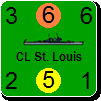
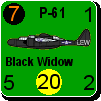

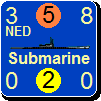

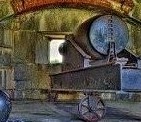
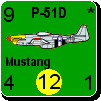


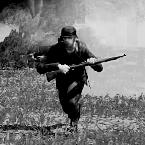
 New Messages
New Messages No New Messages
No New Messages Hot Topic w/ New Messages
Hot Topic w/ New Messages Hot Topic w/o New Messages
Hot Topic w/o New Messages Locked w/ New Messages
Locked w/ New Messages Locked w/o New Messages
Locked w/o New Messages Post New Thread
Post New Thread